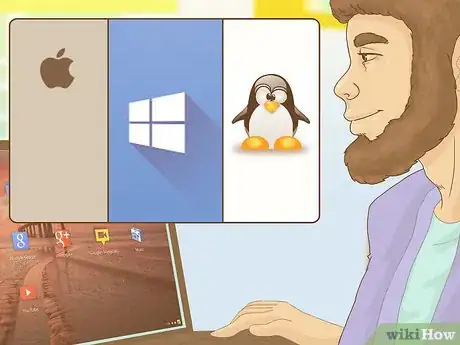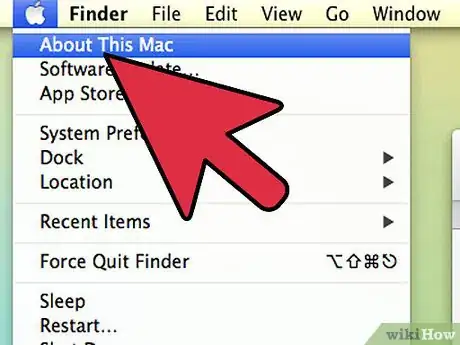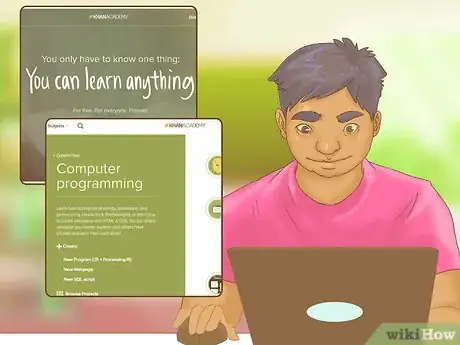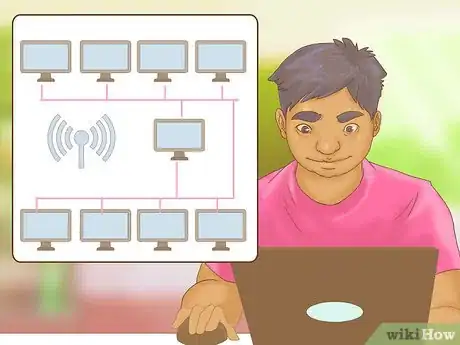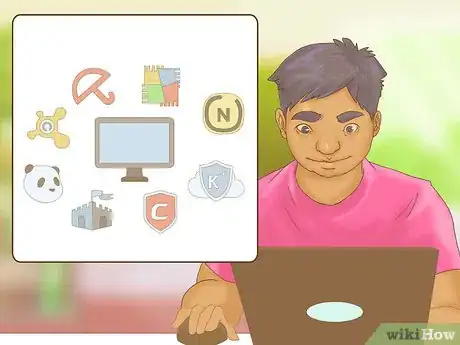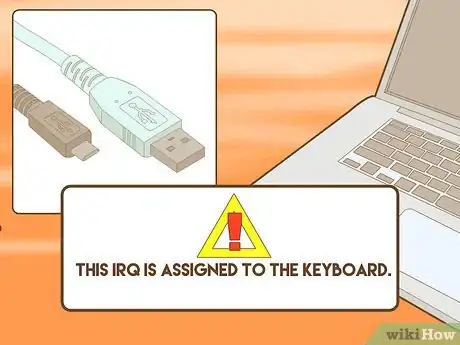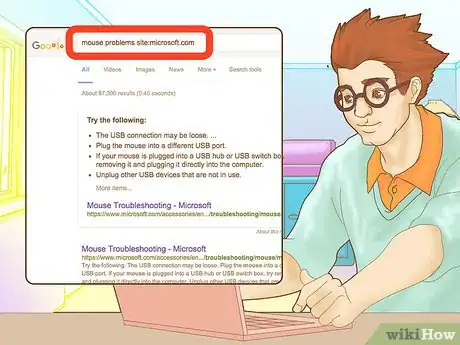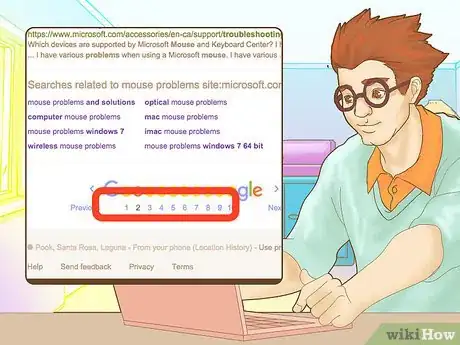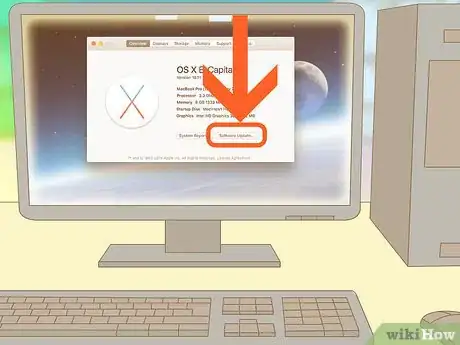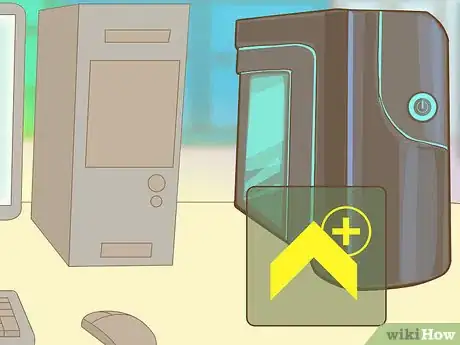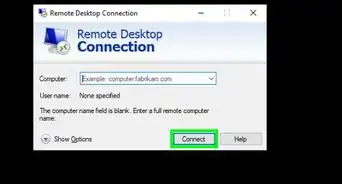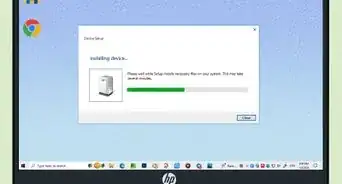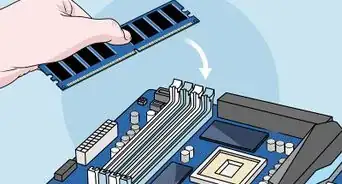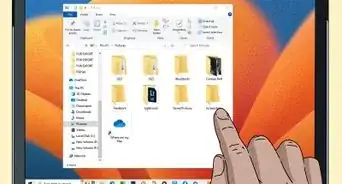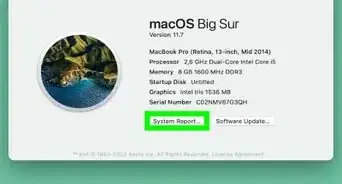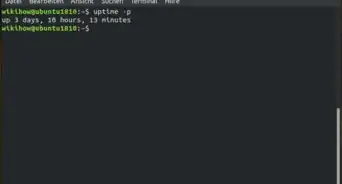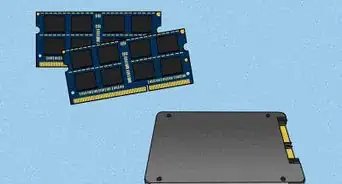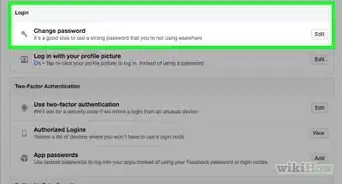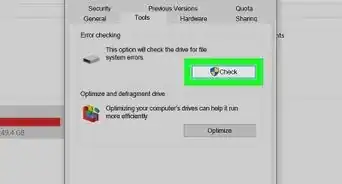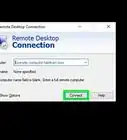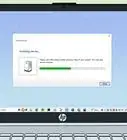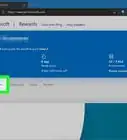This article was co-authored by Luigi Oppido and by wikiHow staff writer, Nicole Levine, MFA. Luigi Oppido is the Owner and Operator of Pleasure Point Computers in Santa Cruz, California. Luigi has over 25 years of experience in general computer repair, data recovery, virus removal, and upgrades. He is also the host of the Computer Man Show! broadcasted on KSQD covering central California for over two years.
wikiHow marks an article as reader-approved once it receives enough positive feedback. This article received 15 testimonials and 91% of readers who voted found it helpful, earning it our reader-approved status.
This article has been viewed 384,893 times.
If you are passionate about learning new things, fascinated by computers, and enjoy problem-solving, you can become a computer genius. And don’t worry if you can’t pursue a computer science degree. You can build computer mastery by combining a solid understanding of computer fundamentals with hands-on experience, troubleshooting skills, and knowing how to find useful information.
Steps
Learning Hardware Basics
-
1Find (and read) a book for a beginner. Even if you are not brand new to using a computer, getting a book for beginners is a great way to fill the gaps in your knowledge. Ask your librarian to show you books for beginning computer users, search your favorite bookseller's website for “computers for beginners,” or try one of these:
- Any computer-related book in the “For Dummies” series, such as PCs for Dummies or Macs for Dummies.
- How Computers Work by Ron White
- Upgrading and Repairing PCs by Scott Mueller
-
2Learn the names of the hardware in your computer. To become a computer genius, you will need to understand how the different parts of a computer work with one another.
- Everything inside of your computer is connected to the motherboard, including the CPU, which acts as the computer’s “brain.”
- RAM stores data that’s currently in use. Become familiar with how it works with and connects to the motherboard.
- Peripheral cards add functions to the computer. Learn about sound, networking, and video cards.
- Storage and disk drives are places to store data. Research hard drives, CD/DVD-ROM drives, and removable media like USB flash drives and SD cards.
Advertisement -
3Go to a computer store and try out the latest technology. Each computer’s hardware specs should be visible on a label or sign near the unit. Notice the different amounts of RAM, different CPU brands and speeds, and different screen resolutions.
- Try opening the same program on different computers and notice differences in speed.
- Ask a salesperson which computers they recommend for various tasks. For example, “Which of these units is good for gaming?” or “Which would you recommend to someone who just needs to write papers for college?” Then, observe the difference in specs between the different computers.
-
4Watch YouTube videos of people opening their computers. Watch other computer geniuses install RAM or replace dead hard drives to get a sense of what these tasks entail.[1] Listen carefully as the person describes what they are doing.
-
5Open your computer and locate each hardware component. If you’re feeling confident, look inside your own computer to see how the different hardware components connect to one another.
- If you feel apprehensive, ask someone who knows more about computers to walk you through the process.
- Never open a computer unless the machine is on a sturdy surface and you are properly grounded.
EXPERT TIPLuigi Oppido is the Owner and Operator of Pleasure Point Computers in Santa Cruz, California. Luigi has over 25 years of experience in general computer repair, data recovery, virus removal, and upgrades. He is also the host of the Computer Man Show! broadcasted on KSQD covering central California for over two years.Computer & Tech Specialist
 Luigi Oppido
Luigi Oppido
Computer & Tech SpecialistTry taking apart broken computers to see how they work. If you want to become an IT expert, buy broken devices and try to fix them. Everyone has a broken computer—you can check computer repair shops, or you can even ask your friends if they have any broken devices on hand. As you take them apart, you'll learn what you're doing through trial and error.
Using Different Operating Systems and Software
-
1Learn the differences between different operating systems. There are pros and cons to using Windows, Mac OS X, Linux, Chrome OS, etc. Visit each operating system’s website to familiarize yourself with its features. Then, search the web for blogs that cater specifically to users of those operating systems. Reading user blogs is a great way to discover how people use their computers.
- Windows is pre-installed on most PCs and is used by businesses as both servers and workstations. Windows is also popular with home users and gamers who love tinkering with hardware.
- Mac OSX is known to be sleek and aesthetically pleasing. Made popular by artists, Mac OSX almost always runs on Apple hardware (although it can be installed on modern desktops) and has a familiar design that is gaining in popularity.
- Linux is a free (usually) flavor of “Unix” used by more advanced computer users. It’s highly customizable, secure, can be used on basically any type of hardware to perform any type of function.
- Chrome OS is a simple operating system found on Google Chromebooks. It’s geared toward people who are more interested in using the web (and web applications) than anything else.
-
2Use every opportunity to play with operating systems other than the one you use. To be a well-rounded computer genius, you should have experience using all operating systems and a wide variety of software.
- You can find Windows PCs at public libraries. Most college campuses have both PCs and Macs available for student use. Alternatively, you can ask a friend or a relative if you can try using their computer.
- Try doing the same sort of task (like browsing the web) on a Windows, Linux, or Mac computer and notice the differences.
-
3Explore the operating system you use on your own computer. Both Macs and Windows have built-in System panels that provide details about the computer. Try to explore a new area of the Control Panel (Windows) or System Preferences (Mac) every day. Just poking around and clicking to view the different options will add necessary information to your budding genius brain.
- To open the Control Panel in Windows, press ⊞ Win+S to launch the search, then type
control panel. Click “Control Panel” in the search results, then browse through the various panels. - To view System Preferences on your Mac: Click the Apple menu at the top-left corner of the screen, then click “System Preferences.”
- To open the Control Panel in Windows, press ⊞ Win+S to launch the search, then type
-
4Install new software. If it’s your first time, start with something easy, like a new web browser. If you’re at a more advanced level, try installing Linux. Linux is a free operating system popular with the geeks (your team!) that can be installed on lots of different hardware configurations.
- Because Linux is so popular with people who love computers, there’s an entire community of Linux users active on chats and forums. Learning Linux is bound to make you new friends, perhaps even a mentor.
Gaining Advanced Skills
-
1Study programming languages such as Java, SQL, Ruby on Rails, or PHP. Once you have nailed the basics, venture into advanced territory. Knowing how to code separates the computer geniuses from casual users. Research what different programming languages do and select one to study.
- Get a book on the language. Starting with a beginner’s book will build a great foundation for your advanced study.
- Look into classes that provide hands-on coding experience. You will have to pay for some of the more prestigious courses available through coding academies, but you’ll find the occasional free class through Coursera and Khan Academy.[2]
-
2Set up a network. Getting one computer on the Internet is simple, but what about configuring an entire network of computers? Challenge yourself to learn different ways to connect computers to the Internet, share files across systems, and set up firewalls.
-
3Learn about (and protect yourself from) threats to your computers, code, and networks. Knowing how to set things up is a great start, but protecting your handiwork from security threats is a whole new world. Research things like Denial of Service attacks, code vulnerabilities, database hacks, and worm viruses to prepare yourself for what’s possible.
-
4Network with other computer enthusiasts. Having a community of computer geniuses (or those who are still in the aspirational stage) will allow you to ask and answer questions, as well as learn about new technology that might interest you.
- Research local meetup groups in your area.
- Discover chatrooms and forums full of computer users that are accessible 24/7.
-
5Commit to a lifetime of learning. Becoming a computer genius will not happen overnight. It takes hard work, dedication, sharp problem-solving skills, and a genuine passion for information.
- Technology is always evolving, so you will need to stay current. The information you know now may be obsolete next year. Read computer magazines, follow popular computing blogs, and stay familiar with the latest in software technology.
- Upgrade to the newest operating systems when they are released.
- Join beta-testing groups for various operating systems and apps so you can be among the first to get hands-on experience.
Becoming an Expert Troubleshooter
-
1Define the problem. When it comes down to it, the way you will be able to show off your genius computer skills is by solving problems. Troubleshooting is one of the most important skills to have in the IT industry.[3] When you’re experiencing a computer issue, start by figuring out what exactly is going on.
- Defining the problem as “The mouse doesn’t work” is too broad—narrow it down to the precise behavior or error message, such as “When I connect the mouse to the USB port, I see a message that says “This IRQ is assigned to the keyboard.”
-
2Sharpen your Google skills. One of the most important skills a genius-in-the-making must learn is how to find information. There’s an art to getting accurate information about computer problems with Google.
- Use quotes (“) around exact words and phrases (
“this IRQ is assigned to the keyboard”instead ofirq assigned to keyboard) to make sure your results match what you are looking for.[4] - Using Google to search a single site. If you’re looking for information about wireless networking and prefer your results be from Microsoft.com, type
mouse problems site:microsoft.cominstead ofmouse problems microsoft. - Filter results by date (often relevant, as computers are always changing) by clicking “Search Tools” at the top of the search results, then change “Any time” to a different time range.[5]
- Use quotes (“) around exact words and phrases (
-
3Read the search results thoroughly, and not just the first page. While the manufacturer’s product pages may be among the first search results, some of the best troubleshooting information will come from user forums.
- It will not take you long to figure out which sites return good search results and which should be avoided. If your search for information brings you to a page that seemingly has little to do with what you searched, that source will not be useful to you.
-
4Join forums to gain insight into problems experienced by users like you. Don’t be afraid to ask questions—but before you do, try using the forum’s “search” feature to reduce the possibility of duplicating an already-resolved thread.
- Many online forums will not allow you to search their content until you register for an account.
-
5Fix your friends’ and family’s computers. Now that you’ve been practicing your troubleshooting skills, find opportunities to get hands-on experience. Ask people you know if they are having trouble with their computers, and then offer to fix them. Use your new skills to find other people online who’ve experienced similar issues and try implementing suggested fixes.
-
6Set up a test computer. Computer geniuses learn how to troubleshoot by breaking things. Rather than messing with the computer you use every day, get yourself a test computer (or even better—a test lab with several types of computers) so you can really get your hands dirty.
Upgrading Your Computer (By Yourself)
-
1Run system updates. Make sure you are using the latest and greatest version of your operating system by checking for system updates.
- Updating operating system software may cause older applications to break. Frustrating! However, finding fixes for such issues is great for improving your troubleshooting skills!
-
2Think about what you might be able to add to your computer to make it better. Ask yourself some questions: What frustrates me about my computer? What can I not do with my computer that others can do with theirs? Once you have some answers, you should be able to determine what kind of hardware or software would improve your experience.
-
3Browse forums for your specific type of computer to see what sorts of upgrades others are doing. Even if you decide not to do any upgrades, you’ll still learn a lot about the different possible configurations for your computer.
Learning Everything You Can about One Computer Topic
-
1Pick something about computers that interests you. Is it web design? Great-looking video? Programming in Python? Becoming an expert on a single topic is an excellent way to assert yourself as a computer genius.
-
2Read articles about your topic online. Use your new Google search wizardry to find up-to-date articles about the topic that interests you. You should also:
- Find (and follow) blogs that are dedicated to that topic.
- Join forums for users who share your interest in that topic.
-
3Watch YouTube instructional videos about your topic. Interested in learning how to set up Wordpress? Fixing broken motherboard components? You will find plenty of instructional videos for just about anything on YouTube.
-
4Look into classes that focus on your topic. If you’re enrolled in college, check to see if classes on that subject are offered. Don’t forget community colleges—they provide a wide variety of courses at a cheaper rate than a university.
- If you would rather learn from home, there are plenty of online courses available in a wide variety of topics.
- Some courses are even available for free on sites like Khan Academy and Coursera. You may even find a course on Youtube.
Community Q&A
-
QuestionWhat is more important--software or hardware?
 Garret Cleare (A-Geek)Community AnswerThey're equally important, because you can't run software without hardware and you can't run hardware without software.
Garret Cleare (A-Geek)Community AnswerThey're equally important, because you can't run software without hardware and you can't run hardware without software. -
QuestionAre memes necessary to be a computer genius?
 Community AnswerNo, memes are not necessary to be a computer genius. However, being familiar with the different memes might help you understand the internet community a little bit more.
Community AnswerNo, memes are not necessary to be a computer genius. However, being familiar with the different memes might help you understand the internet community a little bit more. -
QuestionIs learning java necessary?
 Community AnswerIt isn't necessary, but strongly encouraged. You should at least get familiar with the command line basics, and use some batch (.bat) files. They are simple to learn, and make automating tasks on your computer easy.
Community AnswerIt isn't necessary, but strongly encouraged. You should at least get familiar with the command line basics, and use some batch (.bat) files. They are simple to learn, and make automating tasks on your computer easy.
References
- ↑ http://seniorplanet.org/need-computer-help-try-youtube-videos/
- ↑ http://www.inc.com/larry-kim/9-places-you-can-learn-how-to-code-for-free.html
- ↑ https://www.ced.org/blog/entry/which-skills-are-most-important-on-the-job-and-which-skills-are-in-short-su
- ↑ https://support.google.com/websearch/answer/2466433
- ↑ https://support.google.com/websearch/answer/142143?hl=en&ref_topic=3081620
About This Article
If you’re trying to be a computer genius, start by reading books or watching videos about computer hardware to learn about the parts of a computer and how they work together. Then, visit websites for different operating systems, like Windows and Mac OS X, to understand how to use them. Next, play around with the different operating systems at home, or on computers at places like your local library, so you’ll be familiar with them. You can also read user blogs to get more information about computer hardware, software, and operating systems. For more tips, including how to learn programming languages or networking skills, scroll down!





